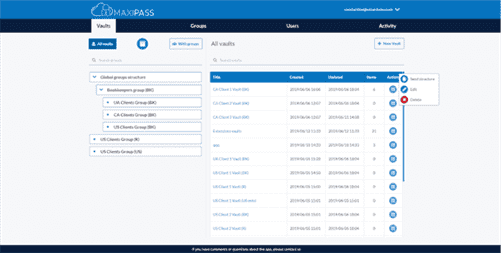Those who stand out start to get accepted by their peers as potential leaders. Team leaders should implement measures for managing competition and potential conflict among members. They also need to streamline competition and ensure the projects they’re handling stay on track. At Team Tactics, we provide a large selection of team building activities with an event suitable for any group. From events requiring strong technical and analytical skills to those requiring optimum creativity, there is an event for everyone.

Team activities alone may not fix teams with incompatible skill levels and dispositions, so better to select the right members for your team from the get go. Most high-performing teams go through five stages of team development. When teams work in the same space, it’s easy to see what everyone’s doing.
Signs and questions to look out for in the norming stage
With remote teams, it’s easy to run on assumptions until you’re almost up against a deadline — and then you discover that you didn’t get the outcome you needed. Help your team check in with each other by holding daily stand-up meetings or mid-week progress reports to see if everyone is on track and has the materials they need. After the team members have moved past the forming, storming, and norming stages of group development, they can finally produce work and rely on team members for support. Their working styles and skills complement one another, and they rely on the each other to perform tasks more efficiently.
- For example, you give the first clue at the start, then they find that item and get the next clue.
- Teambuilding.com is a leading authority on team building and engagement at work.
- It’s best to set clear expectations at every stage so that the team has seamless alignment when proceeding to the next.
- Team members are asking such questions as “What does the team offer me?
- By recognizing that your hard work produces results, you inspire your employees towards continued excellence.
Group members designate roles and delegate responsibilities with help from team leaders. Teammates move beyond the introductory forming stage and start putting plans into action. At this point, teammates have built up enough trust to feel safe sharing honest opinions with the others. In terms of the dating https://www.globalcloudteam.com/ metaphor, this stage is akin to a couple’s first fight, a disagreement over something silly like a comment over a movie or a mess in the sink. Though a team leader’s first instinct may be to play peacekeeper and sidestep an argument, navigating conflict resolution is an essential step in a team’s growth.
Tuckman Theory: Four Stages of Team Building | Forming – Storming – Norming – Performing
A clear decision making model describes who makes the decision and how others will be involved. A team’s mission may be based on a directive from management or others outside the team. But good team discussion about how each member — and the group collectively — understands that mission will make the mission statement meaningful and useful to the team. Mission statements may be short; they should be written in everyday language that each team member understands and supports. These steps are also useful for existing teams that are interested in assessing their format and effectiveness.

Each one consists of different behaviors which are driven by the team members’ needs. Understanding these needs and behaviors are essential in guiding the team to success. Our Emotional Intelligence Masterclass© helps boost teamwork by teaching staff to handle emotions better.
Do the five stages of team building always occur in the same order?
The training improves communication, relationships, decision-making, job satisfaction, motivation, and overall wellbeing. It also enhances the emotional intelligence of the coach, making them better equipped to lead teams. It is challenging for people to define their team goals and roles because they have no experience working in teams. They don’t know each other well enough to depend on each other for their specific expertise or knowledge. During the forming stage, team members are often optimistic and enthusiastic about getting started. They may also be polite and nervous about how the team will gel.
They eventually start to understand roles and responsibilities, how each person works best and how they can support one another’s efforts toward a common goal. Team members tend to be more polite during this stage since they’re learning how to work together effectively. But, there’s still a tendency to revert to their old behaviors when under stress or pressure.
Resources to stay productive and profitable
Team kick-off events are an important part of the start-up process. Kick-off events enable the team to articulate and understand the goals, mission and structure. A well-planned kick-off https://www.globalcloudteam.com/four-stages-of-team-development-what-you-need-to-know/ can increase team productivity and build team momentum. A formalized start-up activity will help the team define its mission, deliverables, roles & responsibilities, and success factors.

The mourning stage paves the way for more growth and learning and new opportunities. This final part of the team building process grants teammates closure and provides a chance to reflect on the experience. In an organization, the adjourning stage could translate into a change in employees’ job responsibilities. For instance, if the team develops a new work process for improving the customer experience, members may be asked to oversee the new and improved process. It involves a challenging yet critical transition from the laid-back forming stage.
Scenario: You’re leading your team through the forming stage
You can also engage in relationship-building team building activities such as storytelling workshops and common traits. One way to foster trust is by strengthening the relationships between teammates. After all, when we interact regularly with individuals, those folks are likely to act in our best interests to maintain the bond. Also, forming relationships means recognizing different personality facets and understanding our colleagues on a deeper level.
Teams may not have the necessary resources and support from leadership to achieve their goals effectively. Then this article is for you, as we explore the psychology of teamwork and share actionable habits that can build highly effective teams. Team Development is also important because it helps us understand how teams change over time. It provides a framework for understanding how to support the development of teams, from their initial formation through to maturity. In this stage, conflict may arise as people express their opinions, and differences in different ways.
Resources
For more information, see our “Using the Stages of Team Development” article and the “What Stage is Our Team In?” tool . At the end of the project, set up an online meeting where team members come together to discuss the entire project, from the successes to the frustrations. Ask them to prepare examples beforehand outlining what worked and what didn’t, and then give each person five minutes to share their thoughts. Document the comments so that it’s easy to see which trends emerge and what changes need to be made going forward. Instead of letting team members battle it out in private messages select the best solution, be ready to invite them into a chat room to offer advice or ask some key questions.